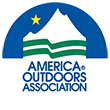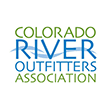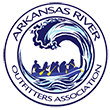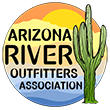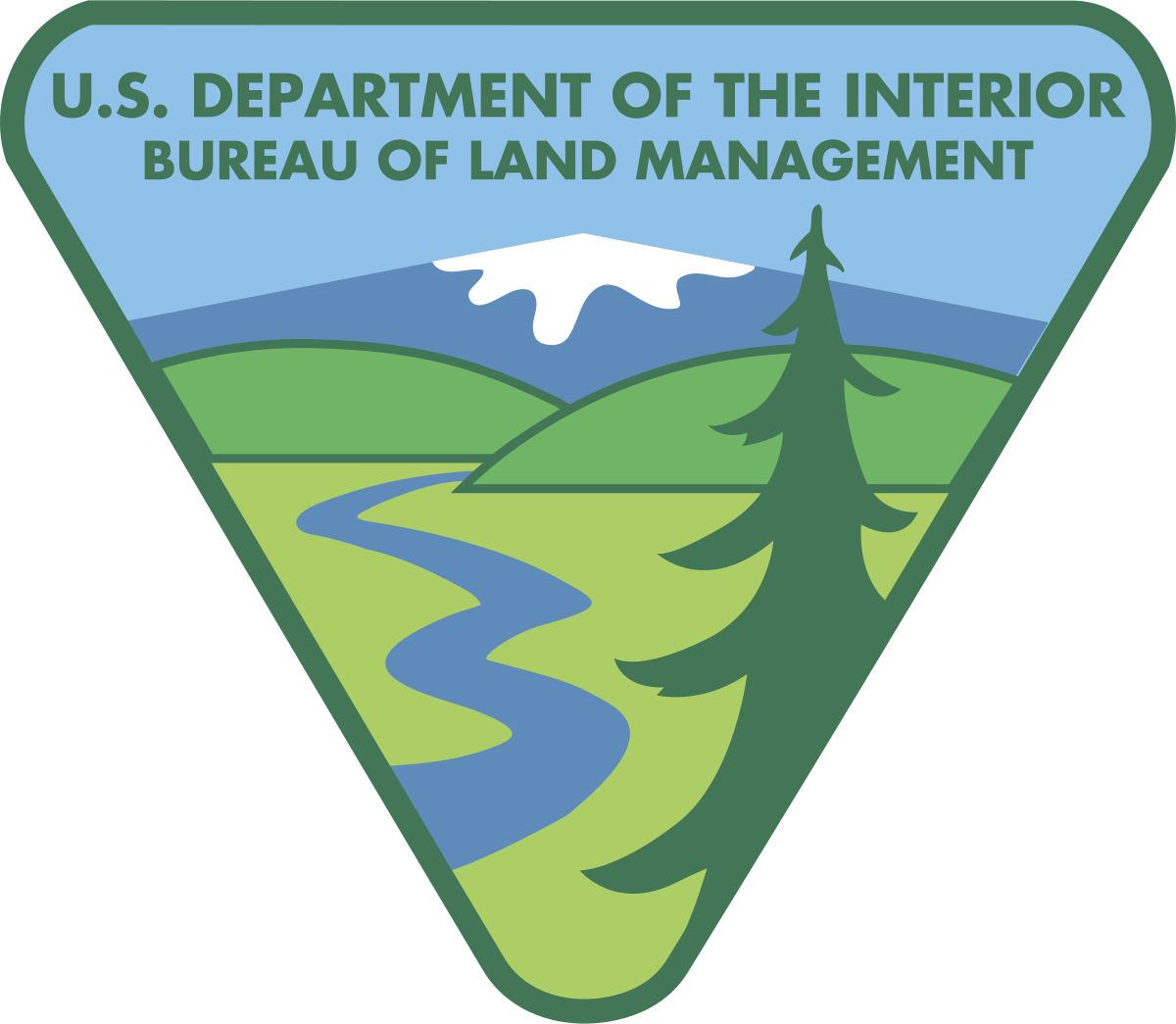Tips for Rafting Heavy Rivers
One of the best parts of Colorado white water rafting is gaining the ability to raft harder and more exciting rivers. We love taking on Mother Nature and the various challenges she throws our way. Even if you raft the same river year after year, it’s never quite the same. The various levels of water and time of year changes the shape of the river bends, the currents, and the obstacles. A significant contribution to the water level is the snow we get each winter in Colorado, so pray for snow! In the spring, it melts off the mountains and the runoff feeds into the rivers below. Depending on how quickly the snow melts, June will see heavy waters. If it melts gradually, then the rivers will flow pretty consistently but with a gradual increase, usually peaking in July and low enough to end the rafting season by Labor Day. When it comes to rafting high water, it can mean many things, but essentially, it means deeper water, faster currents, and higher risk. Keep your head in the game at all times. There’s a reason most of the country’s best white water rafters live in Colorado. Maneuvering You would think that with high water levels come more splash zones as you paddle downriver. However, high water usually covers up the boulders and rocks that the water splashes off of, thereby washing it out and creating big hydraulics but each wave is different. The parts of the river that are usually calm end up with new rapids. Faster currents makes maneuvering between each stroke more difficult as you are traveling quickly and will shorten your rafting trip. Sticking with a guide with many years of experience is your best bet at getting the team to be where you want them to be and avoid anybody falling out. They will know how sharp to turn the raft and the best parts to float over. Safety Higher water levels means faster currents and an increased safety risk. Be sure that your life vest is on you tightly, your helmet is covering your forehead, and you have the proper shoes to protect your feet if you were to fall in. It is even more crucial than usual that you get your feet pointed down river and floating on your back while guiding yourself to the nearest shoreline. The swift speed at which you are flowing downriver may lead to an increased recovery time by your raft mates to come rescue you too. If you are paddling with more than one boat, it’s better to stick closer together in case one needs to help the other. It also goes without saying but don’t drink alcohol before or during the rafting trip. Save the brewskies for celebrating afterwards. At Wilderness Aware Rafting we love white water rafting and enjoying the great outdoors. If you’re interested in rafting, check out the Salt River whitewater rafting or Colorado water rafting trips we have available. Want more adventure? We also have many other fun outdoor trips available.
Grades of White Water Rafting – INFOGRAPHIC
White water rafting usually is rated by classes but they are also referred to as grades. Based on the International Scale of River Difficulty created by the American Whitewater Association, the different grades or classes identifies how difficult each section of a river is and the required skills needed to safely navigate it. Similar to rock climbing scales, there can be easy Class III rapids and harder ones. On a more technical level, a + or – is added to the rating. Find out below what makes each grade/class easy or difficult and what level would be good for you on your next white water rafting trip. At Wilderness Aware Rafting, we love rafting and being on the river. Rated #1 on TripAdvisor, we offer exciting Colorado White Water Rafting Trips, and Salt River whitewater rafting. Contact us today for more information.
Plan Your Bachelorette Party with Whitewater Rafting
If you’re planning a bachelorette party for a friend that is more interested in a less than traditional party to celebrate her last days as a single woman, then a whitewater rafting trip could be right up your alley. For the woman who loves to explore the great outdoors, planning a trip to the mountains with some camping, whitewater rafting, horseback riding, or Colorado zip line tours would be much more memorable and unique for this bride instead of a night on the town. Whitewater rafting is an exciting option that takes your friends on a fun getaway to celebrate the upcoming marriage, which you can easily customize this with another outdoor trip. Many of our trips are budget-friendly and the rivers a rush. We offer great discounts for groups of 10 or more. Plan an Easy and Fun Bachelorette Party Your Maid of Honor duties will be a lot easier when organizing a whitewater rafting bachelorette party since we do all the planning, packing, and cooking. If you’re worried about the camp food, Wilderness Aware provides delicious gourmet meals prepared by our experienced guides. No matter how experienced your guest list is, we can help you choose the right trip that will keep all the girls comfortable while experiencing exciting adrenaline rushes and plenty of laughs. All you have to worry about is bringing the basics: swimsuit, shoes, sunscreen, and water for a day on the river. Don’t worry about taking pictures either, we can capture the best rafting moments for you with professional photography that you get to keep. They would also make a great wedding present. Continue the Party in Buena Vista Buena Vista is a beautiful mountain town to spend the weekend with the Bride and friends. There are plenty of lodging options, hiking trails, good food, shopping, and a hot springs nearby. Start a day off by climbing Mount Princeton, one of the more popular 14ers in the area with beautiful views of the Rocky Mountains and wrap it up with a relaxing soak in a hot spring pool. Whether you decide to do a multi-day camping rafting trip or a half day Browns Canyon rafting trip paired with a couple nights at a rustic inn, you can be sure that the whitewater rafting bachelorette party that you plan will be exciting for everyone involved and there will be plenty of stories to share at the wedding. Need some inspiration to get your party planning going? Adobe just launched their free Adobe Express Invitation Templates so that you can create the perfect party invites free of cost. Happy planning! At Wilderness Aware Rafting our passion is whitewater rafting. If you’re interested in a Colorado Rafting Trip bachelorette party or a multi-day rafting trip, browse our whitewater rafting trips here or call us at 1-800-462-7238 to plan your trip today.
Multi-Day Whitewater Rafting & Camping Vacations
Enjoy a multi-day White water rafting, camping, and outdoor adventure We have specialized in running multi-day rafting adventure trips in Colorado since 1976. This experience gives us the competitive edge when it comes to organizing your river rafting adventure. There is something special about spending more than one day, camping on a river rafting tour. There is time to unwind, forget about your schedule, and really sit back and remember why it is we work so hard… to savor life, adventure, friends, food and mother nature. Very few sports, other than perhaps sailing, allow you to cruise through the countryside effortlessly and without the aid of motors. Pack your wallet away, because your guides have thought of everything, and you can be worry free with all expenses covered. Your biggest decisions will be where to sit on the raft, and whether to take a hike, go fishing or just hang out at camp. When you raft with us, you will enjoy comforts that are not normally associated with backcountry camping. After a great day on the river, imagine yourself enjoying a cold drink by the campfire while your guides prepare a delicious multi-course meal. Guides will even deliver hot drinks to your tent in the morning! Backcountry camping in a remote setting can only be this comfortable on a Wilderness Aware trip! Why our Multi-Day Camping Trips are Special: Every Wilderness Aware multi-day whitewater rafting trip is assigned a special gear boat to carry the group’s camping equipment down the river. This gives us the flexibility to stop at secluded campsites in the canyons, where we have stunning views of the river, mountains and canyon walls. Many companies in Colorado and especially on the Arkansas River don’t offer this wilderness-style white water rafting trip. Our first time guests are thrilled by the quantity and quality of the food served on our multi-day camping trips. Hearty meals from our extensive menu are prepared from scratch with fresh ingredients. A meal with us is an event to remember. Our top-of-the-line equipment allows unparalleled comfort in camp after a day of whitewater rafting. Equipment includes reliable self bailing rafts, comfortable and clean wetsuits and paddle jackets, heavy duty chairs with backs and arm rests, huge dining canopy for evening campfire in the event of rain, portable privacy enclosure shelters a clean and comfortable chemical toilet. Why is each river different and how do I choose? Arkansas River white water rafting trips are close to Denver and Colorado Springs in central Colorado. It is located at the crossroads of almost any trip to Colorado. Great alpine scenery, nearly continuous action, a long season, and a wide range of white water trip difficulties make this river our most popular destination. Larger groups often choose this river due to generous maximum group size limits allowed by the managing agency. The Salt River located just east of Phoenix and north of Tucson, Arizona is one of the nation’s premier wilderness rafting trips. It is a unique experience to float past towering saguaro cactus with their arms reaching toward the sky. This is a perfect springtime trip beginning in March when Colorado is still locked in snow. Gunnison River trips also have a long season, offer spectacular black granite gorge scenery, and are some of the most remote wilderness trips in Colorado. Small group size limits and limited launches keep the crowds away from this wilderness wonderland. Located adjacent to the Black Canyon of the Gunnison National Park. The Upper Colorado is a great family trip and offers gentle, but fast moving water suitable for very young children. This river is close the many Summit County and I-70 resort areas in Colorado. The Dolores River near Cortez, Colorado and Mesa Verde National Park offers a brief chance in May and early June to experience springtime in Colorado’s canyon country. The North Platte is Colorado’s hidden jewel in northern Colorado near Steamboat Springs. Exciting White water, a forested wilderness, miles of wildflowers and abundant wildlife make this river a great choice in May and June.
10 Reasons Why We Need to Protect Our Rivers
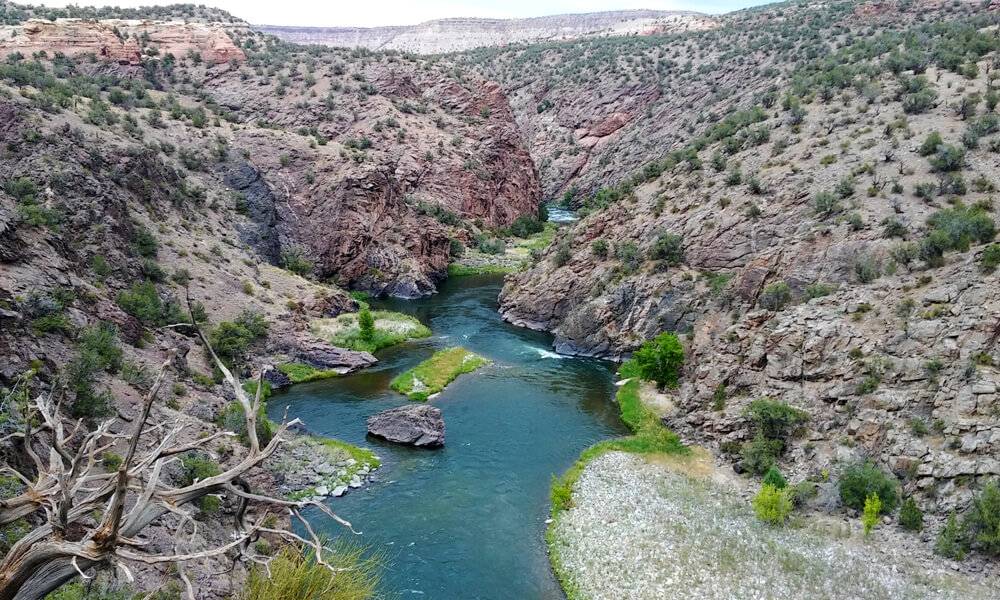
A great snow season means more snow melt and water for our rivers. With warm weather hitting spring earlier, reservoirs are releasing water from their dams and filling the rivers sooner. And that is good news for us—the rafting season starts earlier! For all of you itching to get on the river, you don’t have to wait until summer begins. Besides depending on a great snow season for full rivers, it’s important that we be active in protecting our rivers too. Not only are healthy rivers necessary to hit some hardcore rapids, they’re necessary for the ecosystem around us. The plants and animals surrounding the river and canyon would not thrive and be as beautiful as they are if our rivers were polluted. Water is important for everybody and everything’s health. The human body is 55-60% water. The Clean Water Act The Clean Water Act of 1972 has helped to keep “billions of pounds of pollution” out of our rivers by addressing point sources like wastewater treatment plants and factories (AmericanRivers.org). However, a lot of polluted runoff is picked up along city streets and farmlands. This act came about after people began to realize how dirty rivers were. The Cuyahoga River caught on fire due to oil slicked pieces of debris and if you fell into the Potomac River, you needed a tetanus shot. The Colorado River itself supplies 36 million people with water from Denver to Los Angeles. About 78% is used for agriculture, which grows 15% of our nation’s crops. Ultimately, rivers are a vital part of living. They tell a story, provide geologic, ecological, biological, and human history, shape culture and societies, provide transport, purity, and more. A deep respect for the river is cultural and together we can work to embed that respect in others to maintain and improve the health of our rivers. For those of you who worry that your small actions won’t make a difference, consider everybody that you share this information with, those who already make an effort, and how all these actions will collectively and positively improve the health of our rivers. Reasons to Protect our Rivers Make rivers safe for people to use Protect river ecosystem Help plants flourish Allow animals to thrive Keep pollution out Clean drinking water Agriculture Protect geologic, ecological, biological and human history Helps shape cultures and societies Transportation Check out this list of 50 Ways to Save Your River for more ideas on how you can help. See you on the river!
What is Black Water Rafting?
Black water rafting isn’t white water rafting through Mordor but it actually is going tubing through caves. There are active rivers running through caverns and in the 1980s, New Zealand cave explorers decided to clamber into the Waitomo Glowworm Caves with inner tubes and revel in the awe of twinkling phosphorescent glowworms on the cave ceilings as they cruised underground. Black water rafting is cave spelunking meets white water rafting. It’s referred to as black water because, well, you’re in a dark cave and your inner tube is the small raft. Many times, the natural urge to connect tubes together is how it becomes, “rafting.” At times, rafters peacefully float through as if looking up at a starry night sky but getting there requires some hiking and more heart-pumping thrills. Extreme-sports enthusiasts enjoy the adventure of cave spelunking, rappelling to the rivers, and enjoying the rush of floating through rapids and drops. Where is Black Water Rafting Available? Black water rafting tours are only commercially available in New Zealand and Belize. Many of the available tours are at least 3 hours long and a great way to get in your nature therapy. Since journeying through caves can generally be dangerous, it’s always best to go with a guide who knows the cave and river inside out. Often, some parts of the route will require zip-lining down. The caves where black water rafting are available are usually only accessible through a guide. New Zealand only offers rafting in the Waitomo district and in Belize, the Yucatan caves offer a spiritual look inside the Mayan culture. With the rarity of these cave tubing trips, it’s definitely a unique experience that should not be passed up. Can I Take Myself Black Water Rafting? Taking yourself black water rafting without a guide is not recommended. Getting lost inside a cave is a great way to be lost for a very long time as there are many routes and rooms that lead away from the main path. Guides will provide you with all the essential equipment that you need and be able to help you in case of an emergency. Some of it includes wetsuits, inner tubes, helmets with headlights, water shoes, rope, first aid, and snacks. Some other things to consider are whether you’re claustrophobic or acrophobic. Some parts of caves are very open with high ceilings but it can easily get narrow and you may be floating on your tube with the ceiling right above your head. Other areas have steep drops where some people jump into or zip-line down. Going black water rafting just might make some of you feel like Lara Croft from Tomb Raider. If you’re ready for a rafting adventure but not quite sure about doing it in caves or have a fear of heights, good old white water rafting in the open air should suit your itch for adrenaline outdoors. Check out the White Water Rafting Trips & Raft Trip Packages we have available and get your adventure on.
The Best Waterproof Cameras for Whitewater Rafting
We love taking action shots on the river whether it’s with a digital camera or the CableCam and guests often wonder, what’s the best waterproof camera to take along for rafting trips? Deciding on the best all-around waterproof cameras requires considering the integrity, construction, durability, and actual waterproof ability of the camera. We also focus on those can also take fantastic movement shots as rafting is a sport continually in motion. Other activities in motion that you are likely to take your waterproof camera on are trips like hiking, kayaking, off-roading, to the beach, and more. Having a camera that you can rely on through each adventure is all that we ask for. Optical zoom, pixels, design, shock absorbance, size, anti-motion blur, and price are important to consider when choosing the right camera. Here is our list of the best waterproof cameras for whitewater rafting. Panasonic Lumix TS5 Why It’s Awesome: Built with WiFi technology, there are many features on this camera that allows you to utilize your smartphone or tablet to make things easier. For example, once you snap an image, you can quickly view and share it on your smartphone or tablet using Near Field Communication or edit with effects on the camera. Record videos using the camera or control it from a distance too. Take pictures in and out of water or under water. Another bonus is a built-in GPS allowing you to identify your location. Average Price: $279.99 Dimensions: 4.3 x 2.65 x 1.14 inches Weight: 214 grams Megapixels: 16.1 megapixels Optical Zoom: 4.6x LCD Size: 3 inches Waterproof: 13 m/43 ft Shockproof: 2 m/6.6 ft Dustproof: Keeps out sand or dust particles Freezeproof: -10°C/14°F Pressure Resistance: 100 kgf Anti-Motion Blur: Available Nikon COOLPIX AW110 Why It’s Awesome: A camera meant for exploring, the COOLPIX has a built-in GPS and Electronic compass, which also shows nearby Points of Interest. Using the Nikon View NX2 software, you can share your adventures online. Sensitive images CMOS sensors allow you to take low-light photos without a flash but not necessarily the best at this trick. Average Price: $249.95 Dimensions: 4.4 x 2.6 x 1.0 inches Weight: 6.9 oz/193 g Megapixels: 16.1 megapixels Optical Zoom: 5x LCD Size: 3 inches Waterproof: 18 m/59 ft for 60 minutes Shockproof: 2 m/6.6 ft Humidity Resistance: Less than 85% Freezeproof: -10°C/14°F on land & 0°C/32°F underwater Crushproof: 100 kgf/220 lbf Anti-Motion Blur: Available with Lens-shift Vibration Reduction & Automatic Motion Detection Olympus TG-2 iHS Why It’s Awesome: This camera is built around underwater shooting, including an ultra-bright, high-speed f2.0 lens for low light action. The water-repellent lens coating lets you focus on shooting rather than wiping off droplets. Also and adventuring camera, it includes a GPS and e.Compass with the ability to mark your location on a map using a manometer that detects and records elevation, water depth, and warns you when you get too deep. Give your images a quick edit using 11 filters and beauty makeup mode. Average Price: $379.99 Dimensions: 4.4 x 2.6 x 1.0 inches Weight: 6.9 oz/193 g Megapixels: 12 megapixels Optical Zoom: 4x LCD Size: 3 inches Waterproof: 15 m/50 ft Shockproof: 2.1 m/7ft Dustproof: Yes Freezeproof: -10°C/14°F Crushproof: 100 kgf/220 lbf Anti-Motion Blur: Available with Lens-shift Vibration Reduction & automatic Motion Detection Pentax WG-3 GPS Why It’s Awesome: This rugged-looking design appeals to adventurers with a fast lens. It includes 6 LEDs for macro mode shooting that can get as close as 1 centimeter from the lens. The close zoom is effective with underwater shooting as targets need to be as close as possible for clarity. However, it does struggle with low-light shots. A plus for charging is its ability to utilize inductive charging (aka “wireless charging”). Like the other cameras, it has a built-in GPS for geotagging and a digital compass with pressure sensor, altitude, and direction sensors. Average Price: $299.95 Dimensions: 2.5 x 4.9 x 1.3 inches Weight: 8.4 oz/239 g Megapixels: 16.0 megapixels Optical Zoom: 4x LCD Size: 3 inches Waterproof: 13.7 m/45 ft Shockproof: 2 m/6.6 ft Freezeproof: -10°C/14°F Crushproof: 100 kgf/220 lbf Anti-Motion Blur: Available with Lens-shift Vibration Reduction & automatic Motion Detection Nikon 1 AW1 Why It’s Awesome: The most expensive of these cameras, it comes with a 11-27mm kit lens, the world’s first interchangeable underwater lens. All Nikon lenses are also compatible with this sleek camera. It’s WiFi compatible with a built-in GPS and lets you share images on your smartphone. Average Price: $749.95 Dimensions: 4.5 x 2.9 x 1.5 inches Weight: 11.1 oz/313 g Megapixels: 14.2 megapixels Optical Zoom: 5x LCD Size: 3 inches Waterproof: 14.9 m/49 ft Shockproof: 2 m/6.6 ft Dustproof: Yes Freezeproof: -10°C/14°F Crushproof: No Anti-Motion Blur: Available Once you’re ready to take your future new waterproof digital camera on its first adventure, be sure to check out our whitewater rafting trips for your camera’s first rafting trip.
Rafting as Team Building Exercises
Whitewater rafting is an excellent way to encourage camaraderie and strengthen workplace relationships. Team building exercises don’t have to be at a nearby park or in a meeting room of the workplace to be effective. Most employees enjoy team building a lot more when it takes place in a new environment and involves participating in sports and fitness activities together. You don’t have to sit around telling your deepest fears and walking on hot coal in order to build up your team spirit (unless you really want to). Let’s take a look at the top reasons people organize team building activities and how you can carry out those exercises using rafting. Some of these you may prefer to choose a calmer river to use. Improving Communication Each person in the raft will spend 5-10 minutes as the “guide” and direct the group which way to paddle in order to avoid obstacles or make turns along river bends. Work together to reach different markers and rotate among every employee in the boat without falling behind the other rafters. Employees learn to react to the environment and flow of the river while having the ability to foresee upcoming obstacles and quickly respond. Learn Personal Backgrounds Starting with the person in front right side going clockwise, the first person will tell a story from when they were a small child. The next tells a story from their childhood, then preteen, then teenager, then young adult, etc. In this manner, each person gets to share a part of their background from a different stage while remaining part of the team paddling together. The other members practice listening skills and have the ability to engage with the story-teller on a more personal level too. Trust Everyone in each raft except one person is blind folded and the one with sight has to guide everyone to paddle across a river. Teams will race back and forth across the river and rotate guides until each person has guided the raft to shore. This exercise encourages employees to trust the guidance of each other while the person guiding must adjust their instructions and communication to get their team to paddle effectively as they depend on their advice. Collaboration Set up a worse-case scenario such as: the bus forgot to pick up the rafters and they have to stop on a shore and spend the night next to the river. Ask the team to work together to decide what indicators of the river shore would make them choose to stop there, how they would set up a fire, get fresh water, find food to eat, and set up a shelter based on things they see along the river. Have them come up with a list of 10 things they must do in order to survive the night. Using rafting for team building helps to provide a fun and engaging environment for employees to work on their interpersonal and communication skills together while also valuing their individual skill sets. It helps teams to learn in practice instead of in theory alone while experiencing immediate consequences and requiring creativity and critical thinking to respond with. Plan your team building river rafting trip with us at Wilderness Aware Rafting today. Our Browns Canyon Half Day Trip is our most popular on the Arkansas River. Contact us online or call us for more information 1-800-462-7238.
Guide to Rafting the Grand Canyon
White water rafting in the Grand Canyon is a rare opportunity because as a result of overuse and drought, private and commercial rafting is highly regulated and capped. If you do get the chance, it could be pretty expensive too as prices range between several hundred dollars to $3,000. However, the amazing views and experience alone are worth it. Regardless of whether or not you’ve been to the Grand Canyon, each stretch is incredibly different and the various canyon sections tell a different tale. The opportunity to raft down in the canyon and see the spectacular art and geological history made by nature will not only check off your list of visiting one of the Seven Wonders of the World but also an adventure off your bucket list. Grand Canyon Rafting Trips Require Patience In order to even have a chance at rafting in the Grand Canyon, there are two options to go about it. Go through a commercial river trip with a professional guide—trips are reserved one or two years in advanced Non-commercial self-guided river trips—enter a lottery for a chance to raft the following year The lottery for rafting opens every February for the first three weeks. People who are interested are interested must pay a $25 fee for the “lottery ticket.” If you’re one of the lucky few who win, you’ll must immediately pay a nonrefundable deposit of either $400 or $200, which goes towards your permit fees. Then you’ll be able to pick trip dates for the next year. Those who did not win still have the opportunity to win throughout the year as people cancel or drop out. For more information on the Grand Canyon rafting lottery, visit nps.gov. Preparing for a Grand Canyon Rafting Trip If you choose to go on a commercial rafting trip, there are various skill levels available. The easiest is what’s known as a, “Smooth Water Float Tour,” where kids as young as 4 can ride and there are no white water or rapids. However, thrill seekers can be sure that there are various skill levels also available. Many of the trips range between 5-17 days long. Since many of the trips are extensive, it’s more important than ever to make sure that you pack the right supplies and gear, keeping in mind that cell phones don’t work in the Grand Canyon, especially that far down. In addition, improving your endurance and core strength several weeks before the trip will make rafting a lot more fun and less tiresome. There are many sections of the canyon to visit so if you have a particular section in mind or curious about what other areas look like, Google Maps has a Street View/River View of the Grand Canyon to check out. Open up a tab in your browser to maps.google.com and type in the location or “Grand Canyon.” At first, this map view will pop up. Click on the little yellow person in the lower right-hand corner and drag and drop it to a location on the river. Next, you’ll see some spectacular views of the Grand Canyon (and occasionally what appears to be someone in the river). Excited to go rafting here yet? We’ll help you figure out what to pack. Grand Canyon White Water Rafting Packing List Remember that you’ll be rafting in the canyon where sediments are frequently floating around in the water. Light-colored clothing is discouraged unless you don’t mind discoloration. River Gear Duffle Bag for Personal Items Dry Bag for Items Accessible During the Day (available through commercial groups) Gear Bag Dry Bag for Sleeping Bag, Small Pillow, & Tarp (available through commercial groups) Two-Piece Rain Suit 3 Swimsuits 3 Quick-Drying Shirts 1 Pair of Quick-Drying Pants Neoprene Socks Water Sandals or Water Shoes Lightweight Fleece Jacket Hat With String or Hat Clip Gloves Sunscreen, Lots of It Sunscreen Lip Balm Sunglasses with Safety Strap Campwear 2 Pairs of Pants, Underwear, Shirt, & Socks Sweater or Light Jacket Flip Flops Light Shoes or Hiking Boots 2 Sets of Capilene Long Underwear Sarong (Optional for Changing) Plastic Bags for Dirty or Wet Clothes Clothes Pins & Line for Drying Wet Clothes Daypack or Fanny Pack Water Bottle with Carabiner A Few Extra Carabiners Lotion or Aloe Vera Travel-Size Biodegradable Soap & Shampoo Camp Towel & Wash Cloth Toothbrush & Toothpaste Tissues Eyedrops Glasses, Contacts, & Saline Waterproof Camera with Extra Batteries & Memory Cards Insect Repellant Headlamp or Flashlight Medication Photo ID, Major Credit Card, & Cash Zip Lock Bags for Valuables, Etc. If you have any other essentials such as medication, nail clippers, etc. be sure to pack those too. Try to avoid any unnecessary items and remember that you’ll be outside all day and night with water on all sides and sun or rain in the sky. Can’t wait a year or two out to go rafting? We understand and we won’t be jealous if you book a Grand Canyon rafting trip so long as you scratch your rafting itch this year with us. Check out the Colorado white water rafting trips we have available or contact us today to schedule an exciting trip outdoors.
White Water Rafting for Beginners
The song of the river ends not at her banks, but in the hearts of those who have loved her. -Buffalo Joe White water rafting is an exciting outdoor adventure for everyone, including children and senior adults. If this is your first or second time rafting, there are probably some questions and concerns crossing your mind. The first part of having a great time white water rafting is finding out what beginners need to know and what to look for in a rafting company. Safety Precautions White water rafting is a thrilling sport for all ages. Like many adventure sports, there is risk involved in participating. Traveling with a company that takes the time to teach you safety measures such as how to properly wear a life jacket, helmet, and personal gear is crucial to having a good time. Well-trained guides will coach everybody on their raft how to get in and out of boats, paddle, where to place their feet, rafting language, and what to do in the event of an emergency such as an upturned raft or if someone falls out. In this manner, everybody is educated and more confident, and the guide can better minimize any dangers. If you have any worries about your ability to raft due to your physical health, check with your doctor beforehand. Swimming Abilities Many people are worried about falling out of the raft and not being able to swim. Guests must be at least 7 years old to participate for safety reasons and all of our guests are required to wear a lifejacket and helmet, which eliminates the worry of staying afloat so everyone can have a great time. Guests can choose from a variety of skill levels that they are most comfortable with. Trips that are Class II-IV are suitable for beginners. Wilderness Aware Rafting professional guides work to educate everyone at the start of each trip on what to do if they fall out of the raft and how to properly float down river to the riverside where they will be picked up with little, if any, injuries. If there is a part of the river with any risk of falling out, we’ll be sure to warn you to “dig in” before we hit the rapids. For many people who do fall out, it’s actually the most exciting part of the trip that they enjoy telling others about. Well-Trained & Knowledgeable Staff Wilderness Aware Rafting earned the 2012 Better Business Bureau’s “Excellence in Customer Service” award and we have been twice named Colorado’s Company of the Year. Every member of our staff works to maintain our excellent safety record since 1976. The owner and management team is involved in daily operations and making sure guests have an excellent experience. Part of the awesome experience of taking a trip with us is the trust and care that our guides are professionally-trained, First Aid and CPR certified, and drug-tested. We also make sure that our guides are fun and easy to get along with. Preparing for Your First White Water Rafting Trip The day before your beginner white water rafting trip, make sure you pack the right gear to have a comfortable and fun time. We don’t recommend wearing cotton at all because you’ll stay soaked and cold longer. Bring a swimming suit and wetsuit. If you don’t have a wetsuit, they are available to rent. We do recommend sunglasses with a securing strap and hat since the glare reflecting off the water and canyons can be harsh on the eyes. Water resistant sunscreen is a must to avoid burns. For your feet, bring tennis shoes that you are ok with getting wet or secure sandals. Lastly, also bring a change of clothes, towel, water bottle, fleece jacket, and cash. Are you ready to sign up for a beginners’ trip? Browse our selection of white water rafting trips or contact us today to get started.

